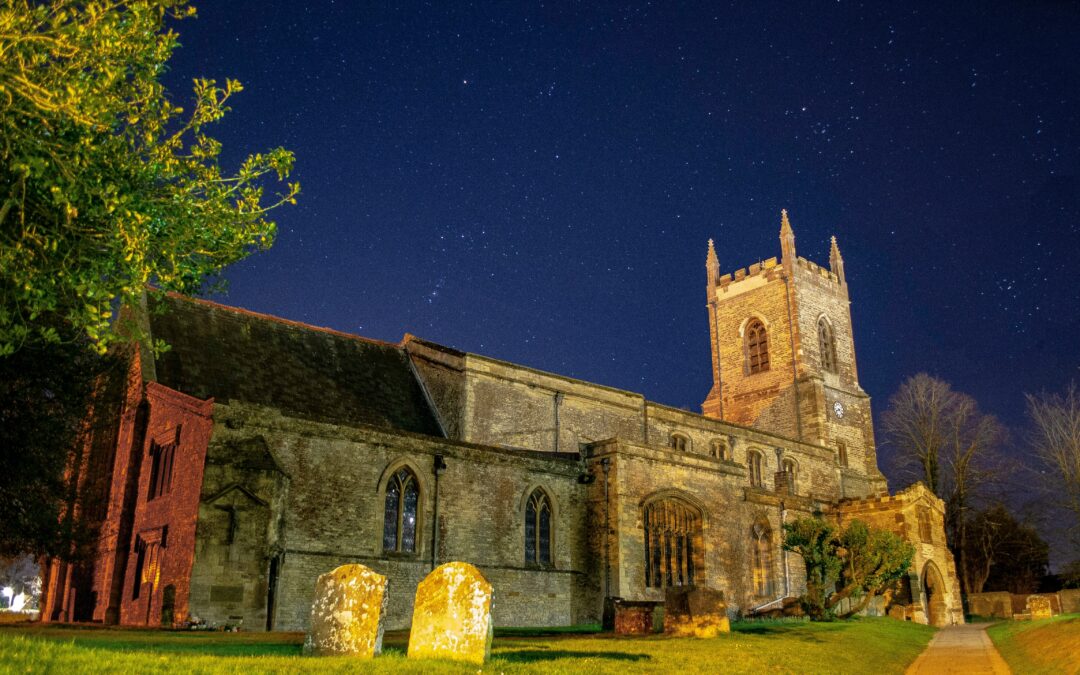I’ve spent several years teaching Physics and Astronomy in online schools that focus on classical education. But it wasn’t until a little over a year ago when a friend asked me about combining classical and modern Astronomy that I started to think about it deeply. How would I teach an Astronomy course that included all the modern content while also serving the purpose of Astronomy as it was taught in the Quadrivium?
The Liberal Arts are divided into the Trivium (Grammar, Logic, and Rhetoric) and the Quadrivium (Arithmetic, Geometry, Music, and Astronomy). While basic education in Arithmetic, Geometry, and Music has naturally undergone some modifications in the past centuries, basic education in Astronomy has undergone a paradigm shift. To teach the same content in Astronomy as was taught during the Middle Ages would be to miss out on our developing scientific understanding of the Universe; on the other hand, to teach only the new content in Astronomy without the context of the Liberal Arts would be to miss out on understanding the Universe as an ordered Cosmos that reflects divine harmony.
The purpose of the Liberal Arts is to liberate our minds. The Trivium does this through the study of letters while the Quadrivium does this through the study of number. Arithmetic is the study of number in itself, Geometry the study of number in space, Music the study of number in time, and Astronomy the study of number in space and time. Pythagoras, even before Christianity, identified the four arts that make up the Quadrivium and argued that there is a mathematical harmony to the Universe.
The Quadrivium is an extension of the pursuit of the transcendentals, such as the true (verum), the beautiful (pulchrum), the good (bonum), and the one (unum). As for truth in Astronomy, we can argue that scientific knowledge participates in truth. Understanding the Universe as one is an important concept that Astronomy can bring across. Most of all, however, I believe that finding beauty in astronomical objects, concepts, and equations is an excellent way to connect Modern Astronomy with Quadrivial Astronomy. It was specifically the beauty from geometric shapes and patterns that come out of visualizations of orbital resonances that captivated me to pursue graduate-level research.
The three big topics in Philosophy are God, Man, and the World. Astronomy focuses on the World, how the World works, on how God creates the World, on how Man knows the World, and on how Man understands his place in the World.
One approach to combine Modern and Quadrivial Astronomy is to start at each end and meet in the middle. From one side we want to modernize Quadrivial Astronomy, while from the other we want to quadrivialize Modern Astronomy.
Before we get into specifics on how this approach might look like, I consider it important to mention the need to avoid attempts that have been made to force patterns. Early on this looked like Kepler’s inscribed and circumscribed regular solids to determine planetary distances and the Titius-Bode Law. More recently, this also includes the push, especially among some Christians, for Intelligent Design and even a resurgence of geocentric theory. A healthy understanding of the relationship between science and faith is crucial for each side to not overstep its boundaries.
A few years ago I designed my own Astronomy course and taught it. It’s now available for free on YouTube. The first half takes a historical approach and looks at Astronomy through time, while the second half takes a systematic approach and looks at Astronomy through space, starting with what is closer to us and moving toward what is farthest away. My intention at the time was not to construct a Modern Quadrivial Astronomy course. But this is something I am highly interested in now. What follows are some ideas I would take into account in constructing such a course.
• Inspire wonder. From the simple beauty of the night sky to the astronomical numbers relevant to grasping at the scale of the Universe, there are countless opportunities in an Astronomy course to inspire wonder. These opportunities should be taken advantage of in pursuit of seeing the Universe as a finite and orderly Cosmos. Beautiful things in Mathematics and Astronomy from contemporary times include fractals, orbital resonances, spiral galaxies, and supernova remnants.
• Humility in knowing science’s achievements and limitations. Teach not only about what is known with great certainty, but also acknowledge what we do not yet have a solid scientific grasp on. A proper balance in this can also prepare the student to learn how further discoveries can be made. Emphasis on learning the history of how things in Astronomy have been discovered in the past can be valuable here.
• Connect Astronomy to other disciplines. Philosophical and theological ideas have often emerged from astronomical observations. A proper and balanced understanding of the Cosmos can inform logical interpretations in Philosophy and Theology. This is relevant for topics such as but not limited to the Copernican Revolution, the Galileo Affair, the Anthropic Cosmological Principle, and distinguishing between the Genesis Creation Account and Big Bang Cosmology.
Someday I expect to teach Astronomy again and to incorporate these as well as other ideas in constructing my new course in Modern Quadrivial Astronomy.

